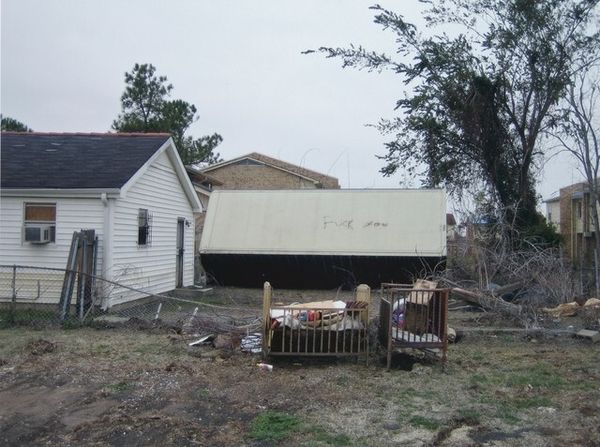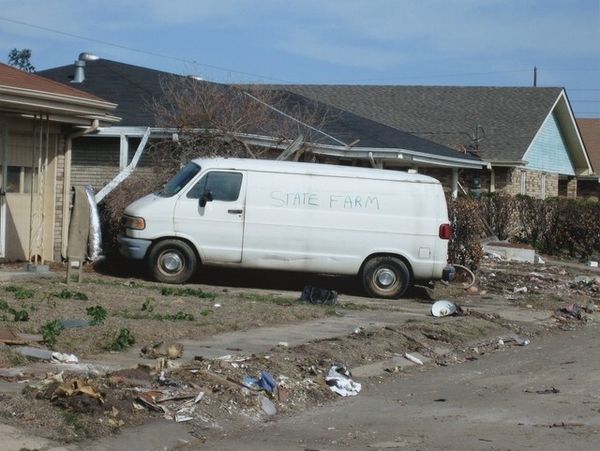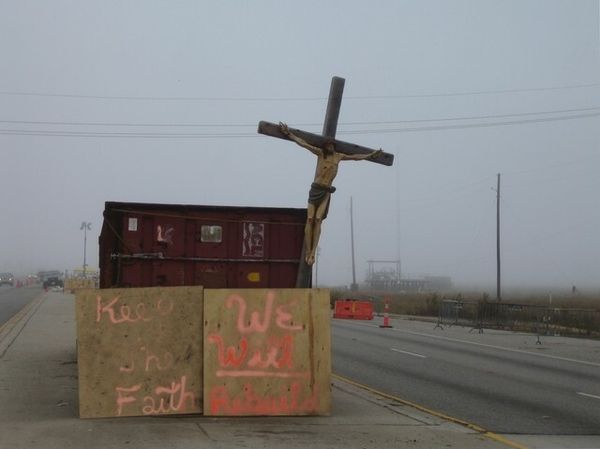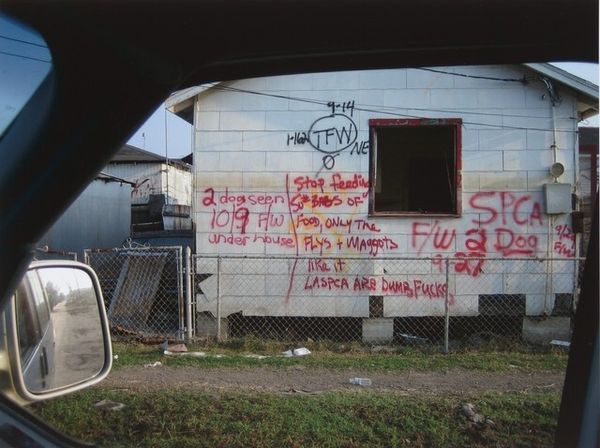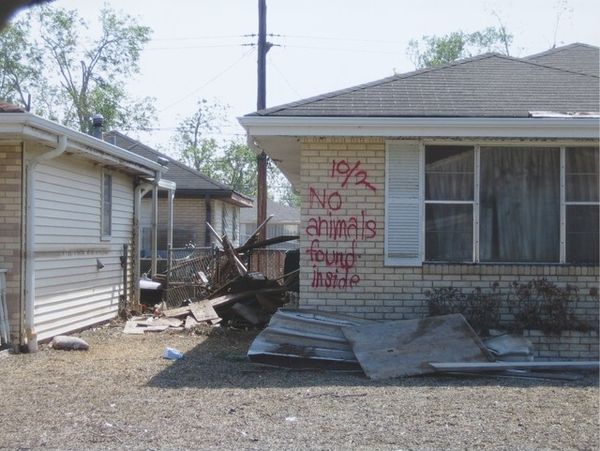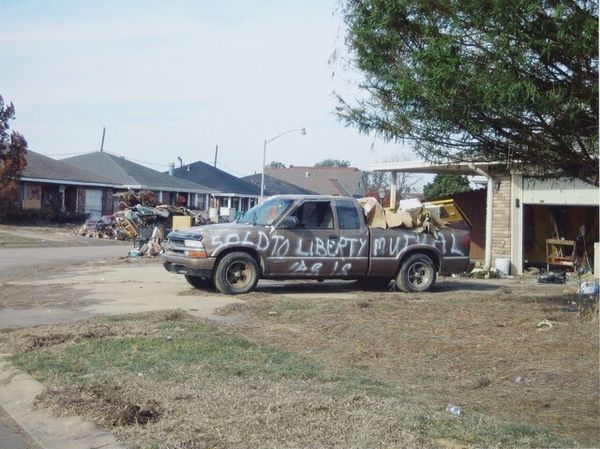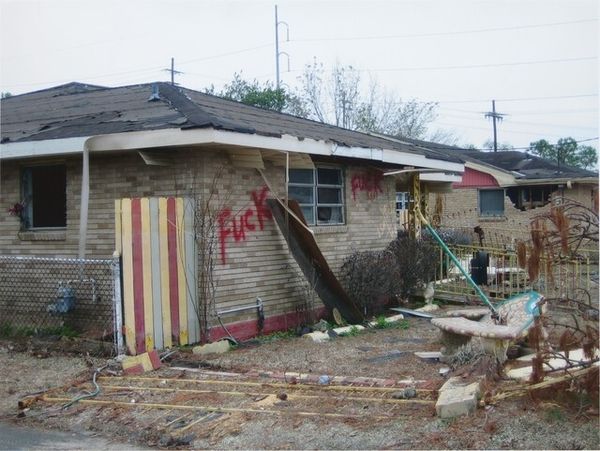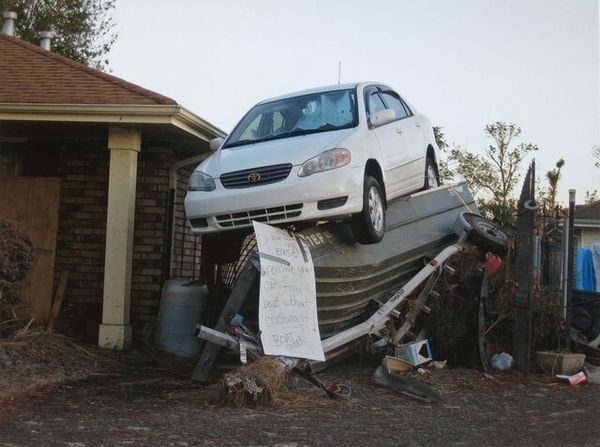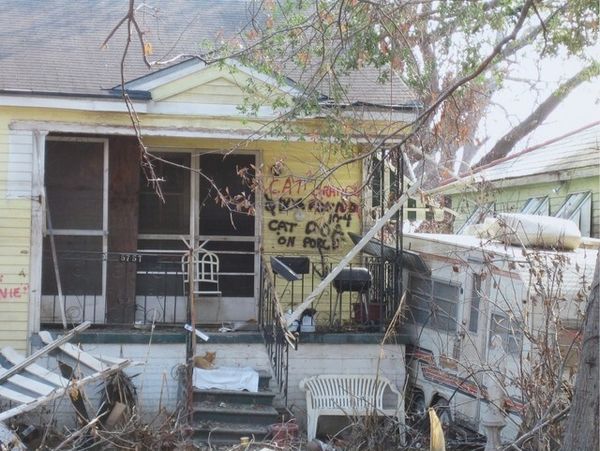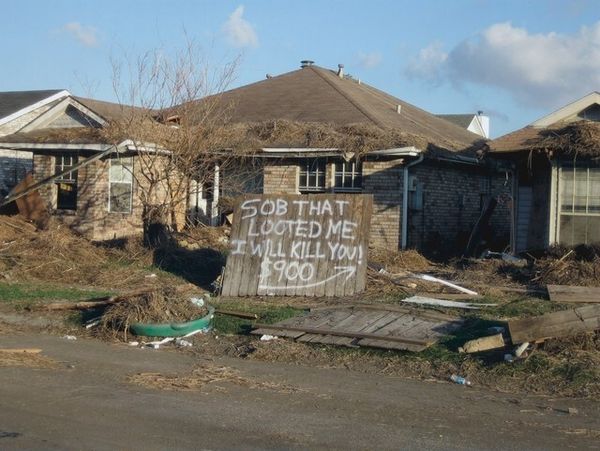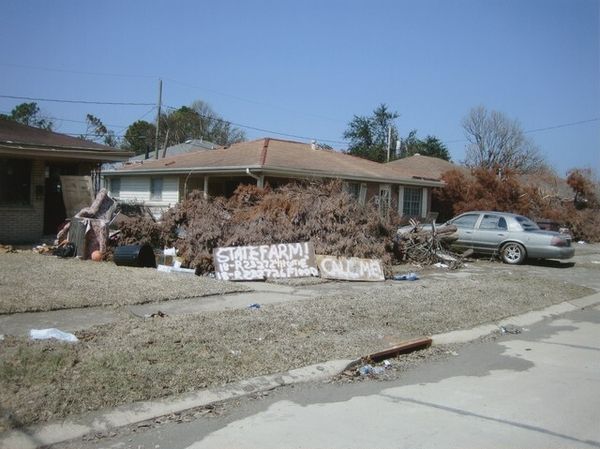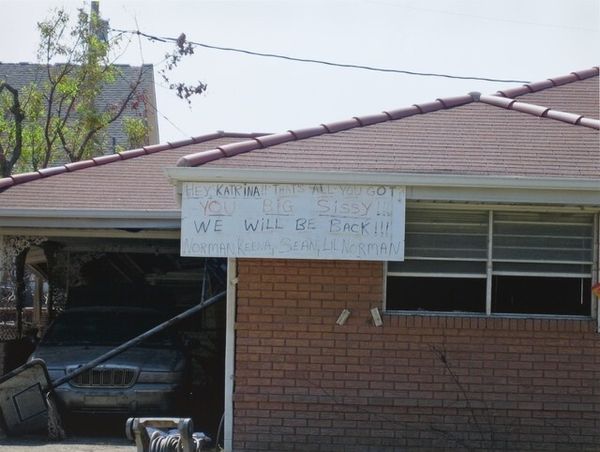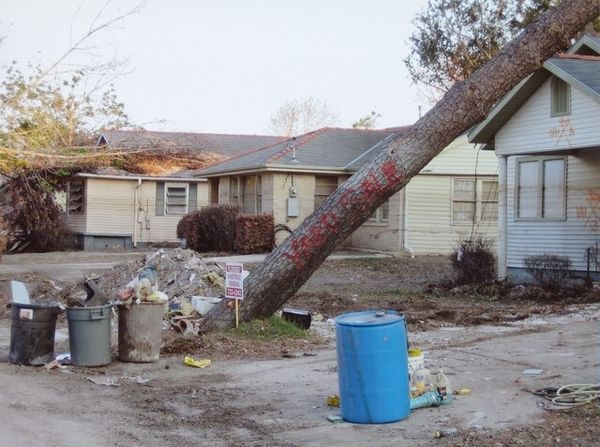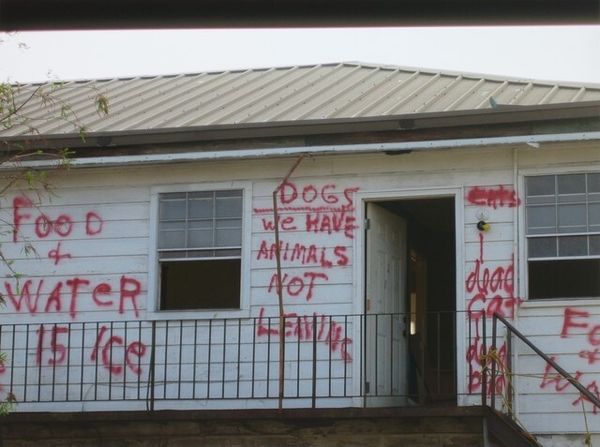![Untitled [New Orleans and the Gulf Coast, 2005] by Richard Misrach](/_next/image?url=https%3A%2F%2Fd2w8kbdekdi1gv.cloudfront.net%2FeyJidWNrZXQiOiAiYXJ0ZXJhLWltYWdlcy1idWNrZXQiLCAia2V5IjogImFydHdvcmtzLzY1MWU5Mzk0LTE0ZmQtNGNjZi1hODY0LWIyYTdmNDY0ZTZmYi82NTFlOTM5NC0xNGZkLTRjY2YtYTg2NC1iMmE3ZjQ2NGU2ZmJfZnVsbC5qcGciLCAiZWRpdHMiOiB7InJlc2l6ZSI6IHsid2lkdGgiOiAxOTIwLCAiaGVpZ2h0IjogMTkyMCwgImZpdCI6ICJpbnNpZGUifX19&w=1920&q=75)
Untitled [New Orleans and the Gulf Coast, 2005] Possibly 2005 - 2010
0:00
0:00
Dimensions: image: 27.62 x 36.83 cm (10 7/8 x 14 1/2 in.) sheet: 28.89 x 38.1 cm (11 3/8 x 15 in.)
Copyright: National Gallery of Art: CC0 1.0
Curator: We’re looking at Richard Misrach's photograph, likely taken between 2005 and 2010, titled "Untitled [New Orleans and the Gulf Coast, 2005]." Editor: Stark, isn't it? The heavy lines of the trailer contrast sharply with the rather bleak setting, and the scrawled text gives it a visceral punch. It feels charged with a subdued rage. Curator: The photograph’s strength lies in that raw presentation, and its layered construction. Notice how Misrach uses color: the muted tones create a visual register of something ruined, devastated. Editor: Exactly. The casual, documentary-style underscores that devastation and speaks volumes about the socio-political climate post-Katrina. The graffiti isn't just vandalism, but a desperate act of defiance. The appropriation of public space is a commentary of societal neglect. Curator: Interesting point, and I would suggest the defacement draws attention to the materiality and decay while forcing the viewer to consider formal and structural concerns of value. It complicates a simple photograph. The work creates this interesting play between line, form, texture... Editor: But to isolate formal concerns risks silencing the voices of those most impacted! I think understanding the historical moment, the abject failure of governmental response and subsequent abandonment of Black communities, is central to decoding the symbolism here. Curator: Agreed, yet that interpretation doesn't preclude more focused contemplation of form. Even that very "defiance", as you say, becomes just another line adding tension within the frame. We can talk about that horizontal weight opposing all this devastation and ruin… Editor: And we absolutely should discuss the social realities it reflects; consider how structures like the overturned trailer and even Misrach's image operate within larger systems of power, privilege, and visibility. What is revealed and concealed in this ruin? Curator: These seemingly disconnected yet very connected perspectives offer new means of examining an aesthetic experience, whether we focus on form or consider social implications. Editor: Precisely. And through critical analysis of social and political frameworks in dialogue with aesthetic experiences, perhaps, collectively, we may glean deeper awareness and maybe spur progressive action.
Comments
No comments
Be the first to comment and join the conversation on the ultimate creative platform.
